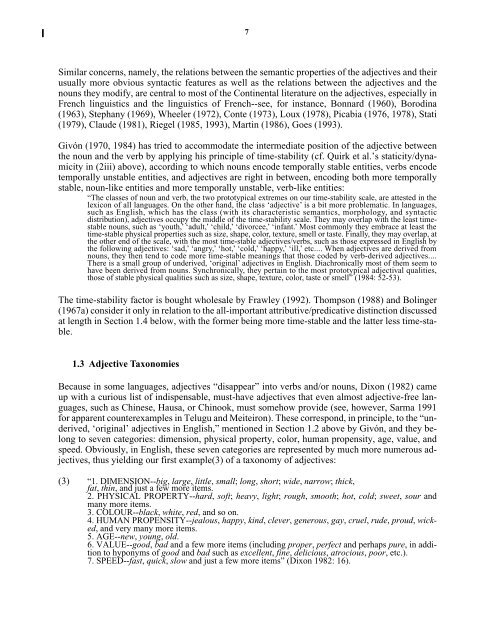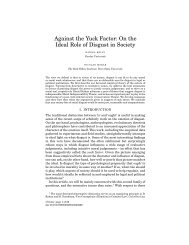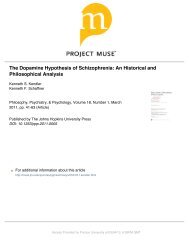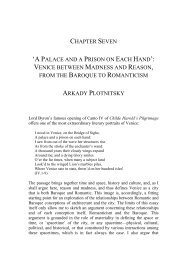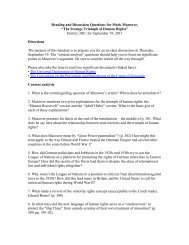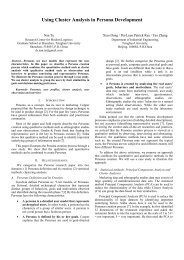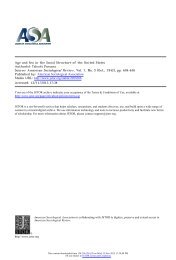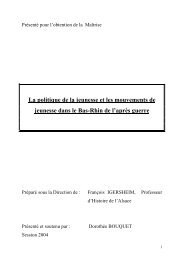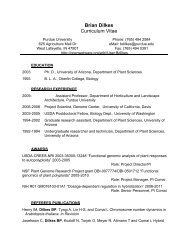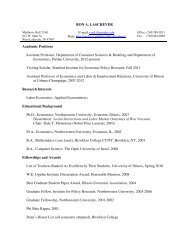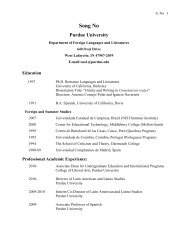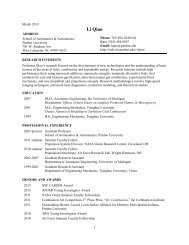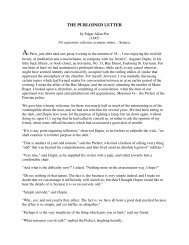Lexical Semantics of Adjectives - CiteSeerX
Lexical Semantics of Adjectives - CiteSeerX
Lexical Semantics of Adjectives - CiteSeerX
Create successful ePaper yourself
Turn your PDF publications into a flip-book with our unique Google optimized e-Paper software.
7<br />
Similar concerns, namely, the relations between the semantic properties <strong>of</strong> the adjectives and their<br />
usually more obvious syntactic features as well as the relations between the adjectives and the<br />
nouns they modify, are central to most <strong>of</strong> the Continental literature on the adjectives, especially in<br />
French linguistics and the linguistics <strong>of</strong> French--see, for instance, Bonnard (1960), Borodina<br />
(1963), Stephany (1969), Wheeler (1972), Conte (1973), Loux (1978), Picabia (1976, 1978), Stati<br />
(1979), Claude (1981), Riegel (1985, 1993), Martin (1986), Goes (1993).<br />
Givón (1970, 1984) has tried to accommodate the intermediate position <strong>of</strong> the adjective between<br />
the noun and the verb by applying his principle <strong>of</strong> time-stability (cf. Quirk et al.’s staticity/dynamicity<br />
in (2iii) above), according to which nouns encode temporally stable entities, verbs encode<br />
temporally unstable entities, and adjectives are right in between, encoding both more temporally<br />
stable, noun-like entities and more temporally unstable, verb-like entities:<br />
“The classes <strong>of</strong> noun and verb, the two prototypical extremes on our time-stability scale, are attested in the<br />
lexicon <strong>of</strong> all languages. On the other hand, the class ‘adjective’ is a bit more problematic. In languages,<br />
such as English, which has the class (with its characteristic semantics, morphology, and syntactic<br />
distribution), adjectives occupy the middle <strong>of</strong> the time-stability scale. They may overlap with the least timestable<br />
nouns, such as ‘youth,’ ‘adult,’ ‘child,’ ‘divorcee,’ ‘infant.’ Most commonly they embrace at least the<br />
time-stable physical properties such as size, shape, color, texture, smell or taste. Finally, they may overlap, at<br />
the other end <strong>of</strong> the scale, with the most time-stable adjectives/verbs, such as those expressed in English by<br />
the following adjectives: ‘sad,’ ‘angry,’ ‘hot,’ ‘cold,’ ‘happy,’ ‘ill,’ etc.... When adjectives are derived from<br />
nouns, they then tend to code more time-stable meanings that those coded by verb-derived adjectives....<br />
There is a small group <strong>of</strong> underived, ‘original’ adjectives in English. Diachronically most <strong>of</strong> them seem to<br />
have been derived from nouns. Synchronically, they pertain to the most prototypical adjectival qualities,<br />
those <strong>of</strong> stable physical qualities such as size, shape, texture, color, taste or smell” (1984: 52-53).<br />
The time-stability factor is bought wholesale by Frawley (1992). Thompson (1988) and Bolinger<br />
(1967a) consider it only in relation to the all-important attributive/predicative distinction discussed<br />
at length in Section 1.4 below, with the former being more time-stable and the latter less time-stable.<br />
1.3 Adjective Taxonomies<br />
Because in some languages, adjectives “disappear” into verbs and/or nouns, Dixon (1982) came<br />
up with a curious list <strong>of</strong> indispensable, must-have adjectives that even almost adjective-free languages,<br />
such as Chinese, Hausa, or Chinook, must somehow provide (see, however, Sarma 1991<br />
for apparent counterexamples in Telugu and Meiteiron). These correspond, in principle, to the “underived,<br />
‘original’ adjectives in English,” mentioned in Section 1.2 above by Givón, and they belong<br />
to seven categories: dimension, physical property, color, human propensity, age, value, and<br />
speed. Obviously, in English, these seven categories are represented by much more numerous adjectives,<br />
thus yielding our first example(3) <strong>of</strong> a taxonomy <strong>of</strong> adjectives:<br />
(3)<br />
“1. DIMENSION-big, large,<br />
little,<br />
small;<br />
long,<br />
short;<br />
wide,<br />
narrow;<br />
thick,<br />
fat,<br />
thin,<br />
and just a few more items.<br />
2. PHYSICAL PROPERTY-hard, s<strong>of</strong>t;<br />
heavy,<br />
light;<br />
rough,<br />
smooth;<br />
hot,<br />
cold;<br />
sweet,<br />
sour and<br />
many more items.<br />
3. COLOUR-black, white,<br />
red,<br />
and so on.<br />
4. HUMAN PROPENSITY-jealous, happy,<br />
kind,<br />
clever,<br />
generous,<br />
gay,<br />
cruel,<br />
rude,<br />
proud,<br />
wicked,<br />
and very many more items.<br />
5. AGE-new, young,<br />
old.<br />
6. VALUE-good, bad and a few more items (including proper,<br />
perfect and perhaps pure,<br />
in addition<br />
to hyponyms <strong>of</strong> good and bad such as excellent,<br />
fine,<br />
delicious,<br />
atrocious,<br />
poor,<br />
etc.).<br />
7. SPEED-fast, quick,<br />
slow and just a few more items” (Dixon 1982: 16).


